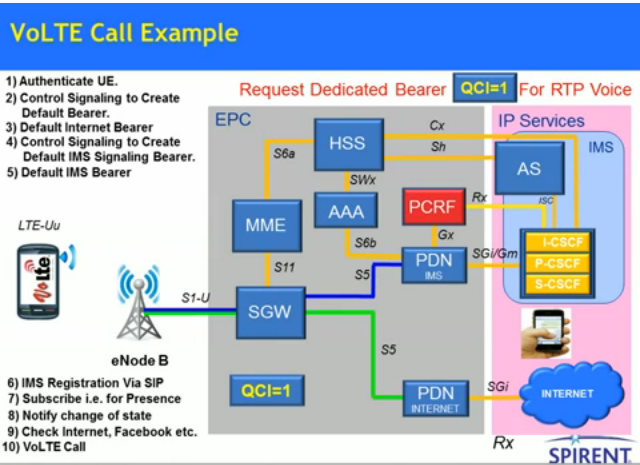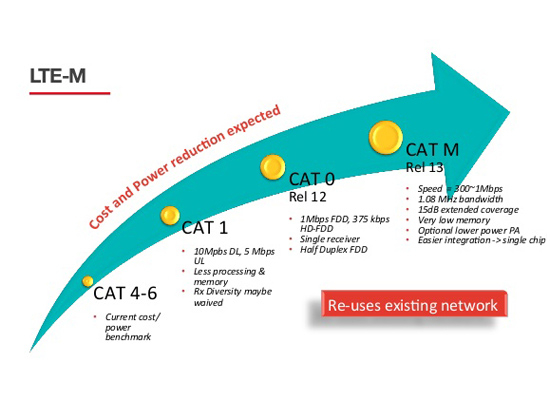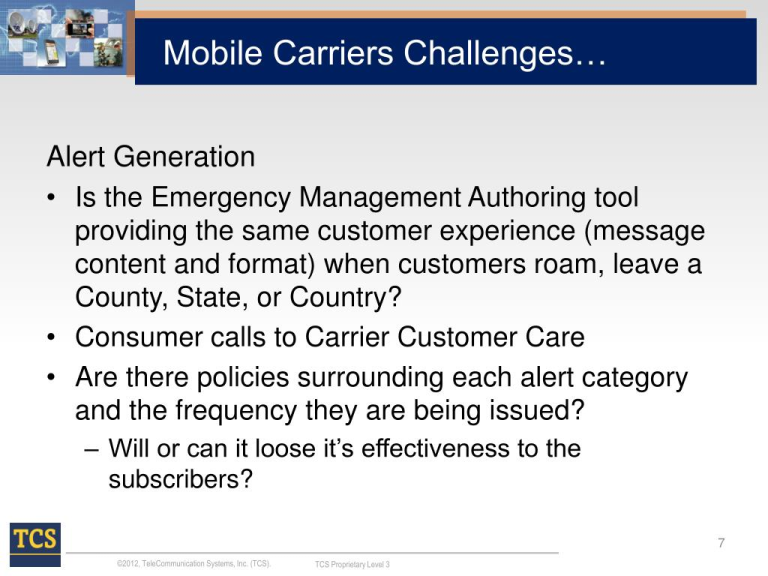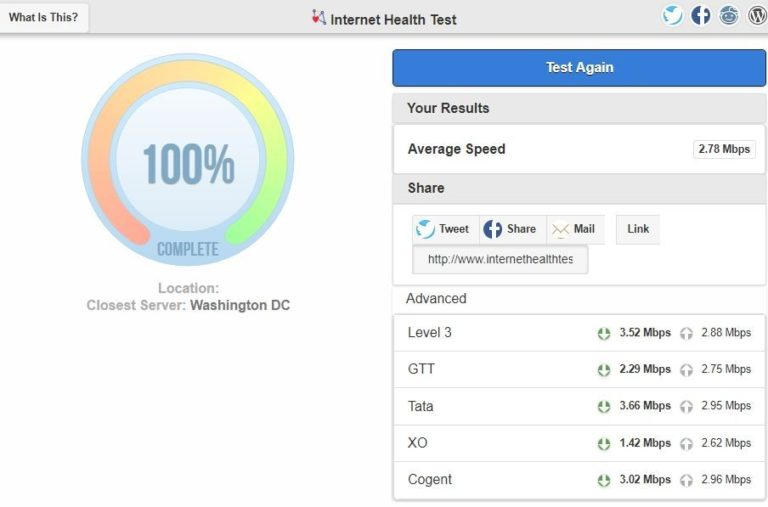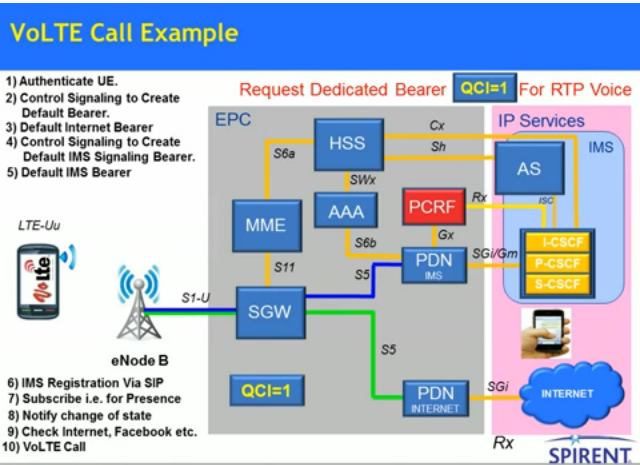
VoLTE, or Voice over LTE, is revolutionizing the way we communicate by enabling high-quality voice calls over 4G LTE networks. This cutting-edge VoLTE technology offers significant benefits for users, including improved call clarity and the ability to stream data and talk simultaneously without interruptions. Apple, known for its innovative products, embraced VoLTE with the launch of the iPhone 6, paving the way for enhanced mobile experiences. Furthermore, with mobile phone usage on the rise, understanding the advantages of VoLTE, such as lower latency and better network efficiency, becomes increasingly vital for both consumers and businesses. As the demand for seamless connectivity continues to grow, the potential of voice over LTE remains a compelling topic in telecommunications.
Voice over LTE (VoLTE) represents a significant advancement in mobile communication, allowing voice calls to be transmitted over 4G LTE networks rather than traditional circuits. This shift not only enhances call quality but also maximizes the efficiency of network resources, enabling users to engage in voice calls while using data services simultaneously. Moreover, the integration of technologies like Apple’s VoLTE ensures that users experience richer, more reliable communication options. With the rapid evolution of this technology, companies and individual users alike stand to gain massively from adopting VoLTE systems. As we dive deeper into the implications and advantages of VoLTE, it’s essential to appreciate how this seismic shift transforms both consumer and enterprise communication landscapes.
Understanding VoLTE Technology and Its Importance
Voice over LTE (VoLTE) technology represents a significant advancement in mobile communication, allowing voice calls to be transmitted over 4G LTE networks. This allows for higher quality voice calls compared to traditional 3G networks, enhancing the overall user experience. VoLTE achieves this by enabling simultaneous voice and data transactions, which means that users can browse the internet or stream media while on a call without interruption. Furthermore, VoLTE has been projected to enhance network efficiency, making it a critical topic for both consumers and enterprises alike.
For businesses, VoLTE offers substantial benefits, including faster call setup times and improved voice clarity, which are essential for effective communication in competitive landscapes. Additionally, as companies increasingly rely on mobile technology, adopting VoLTE can streamline operations and enhance customer interactions. With major providers rolling out VoLTE services, it is vital for businesses to stay informed and consider integrating this technology into their communication strategies.
VoLTE Benefits for Consumers and Enterprises
The transition to VoLTE is not just a trend; it offers practical benefits that can greatly improve user experience. For consumers, VoLTE delivers superior call quality, reducing the effects of background noise and improving clarity, which is particularly noticeable in crowded environments. Additionally, due to its ability to handle simultaneous voice and data, users can enjoy seamless multitasking—scrolling social media feeds or streaming a video while on a call, a functionality that enhances everyday convenience.
From an enterprise perspective, the benefits of VoLTE extend into the realms of productivity and efficiency. Businesses utilizing VoLTE can take advantage of reduced latency in communications, which is essential for time-sensitive interactions, such as customer service calls and conference calls. With the rise of remote work and the growing need for robust telecommunications solutions, integrating VoLTE can provide enterprises with a competitive edge in providing efficient service to clients and stakeholders.
The Evolution of 4G LTE and VoLTE Integration
4G LTE marked a significant shift in mobile telecommunications, laying the groundwork for standards like VoLTE that enhance voice and data service delivery. When it was first introduced, LTE promised faster data speeds and new functionalities, but the addition of VoLTE has set a new standard, allowing users to enjoy high-quality voice calls alongside high-speed data. This evolution has not only changed customer expectations but has also compelled service providers to innovate constantly to keep pace with the expanding capabilities afforded by VoLTE.
As LTE networks mature, the integration of VoLTE has become increasingly critical. With the ability to deliver voice services over existing LTE infrastructure, carriers can improve their service offerings without needing to invest heavily in separate voice networks. This merger of voice and data services indicates a shift toward all-IP networks, which are more efficient and cost-effective for operators while providing consumers with enhanced service quality.
A Brief Look at the History of 4G and VoLTE
The journey toward widespread adoption of VoLTE is deeply intertwined with the history of 4G technology. Initially launched in 2008, 4G aimed to revolutionize mobile connectivity by providing faster data transmission speeds. However, the transition from theoretical standards to practical implementations was complex, marred by inconsistencies and inadequate marketing efforts from telecom operators. Given this context, the introduction of VoLTE offered a renewed opportunity for operators to deliver improved voice services that showcase the full potential of these faster networks.
Although the history of 4G is filled with hurdles, its evolution has been crucial for the proliferation of VoLTE. As LTE networks have been established globally, VoLTE has begun to emerge as a viable standard for voice services. This shift is essential not just for personal communication but also for industries that depend on reliable voice connectivity, affirming that the initial promises of 4G technology are finally being realized through advancements like VoLTE.
Mainstream Adoption of VoLTE in the Telecommunications Industry
VoLTE has reached a tipping point where mainstream adoption is visible across various markets. Leading carriers like Verizon and T-Mobile have reported millions of users benefiting from enhanced voice quality and simultaneous voice and data capabilities, confirming that VoLTE is not merely a fad but a lasting evolution in mobile communications. This surge in VoLTE users represents a collective shift in both consumer and carrier expectations, indicating that the demand for quality voice services is on the rise.
As carriers continue to expand their VoLTE capabilities, it’s evident that the telecommunications landscape is shifting towards a model where voice services are increasingly integrated with mobile data. This transition also reflects a broader trend towards all-IP networks where voice, video, and data coexist seamlessly, delivering a unified experience. The pace of innovation surrounding VoLTE is anticipated to accelerate, helping bridge the gap between older generations of technology and next-generation services.
Emerging VoLTE Applications and Solutions
As VoLTE technology continues to mature, new applications and solutions are emerging that leverage its advantages. For instance, video calling over VoLTE is gaining traction as the infrastructure improves, allowing users to engage in high-quality video communication without the constraints of traditional networks. This capability is proving invaluable for enterprises that rely on video conferencing tools to connect teams and clients remotely.
Moreover, advancements in VoLTE technology pave the way for enriched communication services, such as rich communication services (RCS), which provide enhanced messaging experiences beyond SMS. As these applications become more mainstream, they will redefine how consumers and businesses interact, ultimately fostering a more connected digital ecosystem. The future of VoLTE appears promising, with innovation expected to drive further growth and utility in various sectors.
Challenges Ahead for VoLTE Implementation
Despite its advantages, the implementation of VoLTE is not without challenges. Telecom operators must overcome technical hurdles related to infrastructure capabilities to deliver quality VoLTE services. For many, upgrading existing technologies and networks to support VoLTE functionality can pose significant challenges, requiring investment and strategic planning. Few businesses may find themselves hesitant to adopt VoLTE without clear, robust support from their service providers.
Alongside these technical and investment challenges, market education is critical. While consumer awareness of VoLTE is growing, many businesses may still be unaware of its capabilities or benefits. Overcoming this knowledge gap will be essential as telecommunications providers work to drive adoption and encourage enterprises to embrace VoLTE as an integral part of their communication strategies.
VoLTE and Its Role in Future Mobile Strategies
Looking ahead, VoLTE will play a pivotal role in shaping future mobile communication strategies. As mobile users increasingly rely on high-quality voice services, the pressure on carriers to deliver seamless VoLTE experiences will intensify. VoLTE’s capacity to integrate with other communications technology makes it an essential asset for businesses aiming to modernize their operations and improve communication efficiency.
As we progress into an era where mobile technology dominates, the strategic importance of VoLTE will likely elevate. Companies that adopt VoLTE and other advanced mobile technologies will position themselves advantageously in the competitive landscape. Embracing this evolution not only streamlines communication but also opens doors for innovation and enhanced customer experiences across various industries.
Future Prospects: LTE Broadcast and VoLTE Innovations
The future of VoLTE encompasses exciting prospects like LTE Broadcast, a technology already standardized within LTE that allows carriers to efficiently distribute content. This capability is crucial as mobile data consumption continues to rise, reinforcing VoLTE’s importance in the evolving telecom landscape. With LTE Broadcast, users can expect to enjoy enhanced multimedia experiences, as operators can deliver simultaneous broadcasts to multiple users seamlessly.
As operators explore the potential of LTE Broadcast, the integration with VoLTE will unlock further innovations in multimedia services. For instance, live event broadcasting to smartphones can become a reality, providing opportunities for businesses to engage users more interactively. As these technologies converge, VoLTE will likely take center stage, driving new developments and applications that benefit both consumers and enterprises.
Frequently Asked Questions
What is VoLTE and how does it work?
VoLTE, or Voice over LTE, is a technology that allows voice calls to be transmitted over 4G LTE networks instead of traditional circuit-switched networks. This enables higher-quality voice calls with enhanced clarity and allows users to simultaneously use voice and data services.
What are the benefits of VoLTE technology for consumers?
The benefits of VoLTE technology for consumers include superior voice call quality, faster call setup times, and the ability to use high-speed data simultaneously while on a call. This improvement in voice over LTE significantly enhances the overall user experience.
How does Apple support VoLTE in its devices?
Apple first introduced VoLTE support in the iPhone 6, allowing users to benefit from enhanced voice calling and data speeds. With the integration of VoLTE, Apple devices can make high-quality voice calls while maintaining access to the internet.
What is the impact of VoLTE on business communications?
VoLTE can significantly improve business communications by providing better voice quality, enabling video calls, and enhancing overall network efficiency. These features can lead to improved collaboration and productivity for businesses.
Is VoLTE expected to grow in popularity?
Yes, VoLTE is expected to grow rapidly in popularity, with projections indicating a substantial increase in VoLTE subscribers and revenue. This growth is driven by enhanced user experience and the increasing integration of VoLTE into mobile devices.
How does VoLTE technology differ from traditional voice services?
VoLTE technology differs from traditional voice services by using 4G LTE networks for voice calls, which results in better quality and faster connections. Traditional voice services rely on older, slower circuit-switched technology.
What challenges do carriers face in deploying VoLTE?
Carriers face challenges such as upgrading their backend IT infrastructure to support VoLTE services while ensuring quality performance. Additionally, there has been a historical skepticism due to past telecom service experiences.
What future innovations are expected with VoLTE?
Future innovations with VoLTE may include enhanced services such as video calling, LTE Broadcast for efficient content delivery, and integration with enterprise solutions for improved communication capabilities.
Can VoLTE improve mobile data management for carriers?
Yes, VoLTE can help carriers optimize their spectrum usage by refarming legacy 2G and 3G networks, potentially revitalizing the carrier Wi-Fi market and improving overall data management.
What is the relationship between VoLTE and 5G technology?
VoLTE technology is evolving alongside 5G, but many industry experts note that VoLTE offers a mature platform for voice services, while 5G is still in the process of establishing itself as a standard.
| Key Point | Details |
|---|---|
| VoLTE Introduction | Apple first introduced VoLTE with the iPhone 6, enabling simultaneous voice and data transmission. |
| Potential of VoLTE | VoLTE enhances call quality and allows efficient use of network resources. |
| Market Growth | VoLTE service revenue is expected to rise significantly, with millions of users adopting the technology. |
| Challenges | Carriers face infrastructure challenges in supporting VoLTE services for businesses. |
| LTE Broadcast Technology | LTE Broadcast allows simultaneous content delivery to numerous users, enhancing efficiency. |
| Carrier Wi-Fi Revitalization | VoLTE may help mobile operators refarm their 2G and 3G spectra to improve carrier Wi-Fi. |
Summary
VoLTE, or Voice over LTE, marks a significant leap in the realm of telecommunications by facilitating voice calls over LTE networks, combining enhanced call quality with the ability to use data simultaneously. As carriers and enterprises recognize the growing adoption and potential of VoLTE, it promises to revolutionize the way voice and video communication is handled in both consumer and business settings. Despite initial skepticism and technical challenges, VoLTE is rapidly becoming a cornerstone technology in modern mobile communications.
